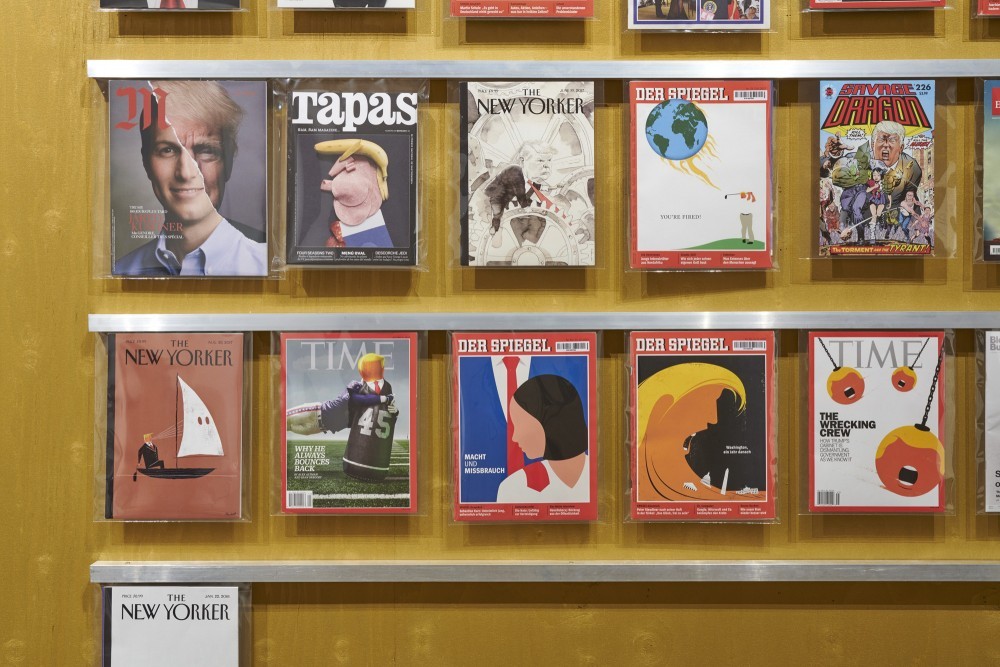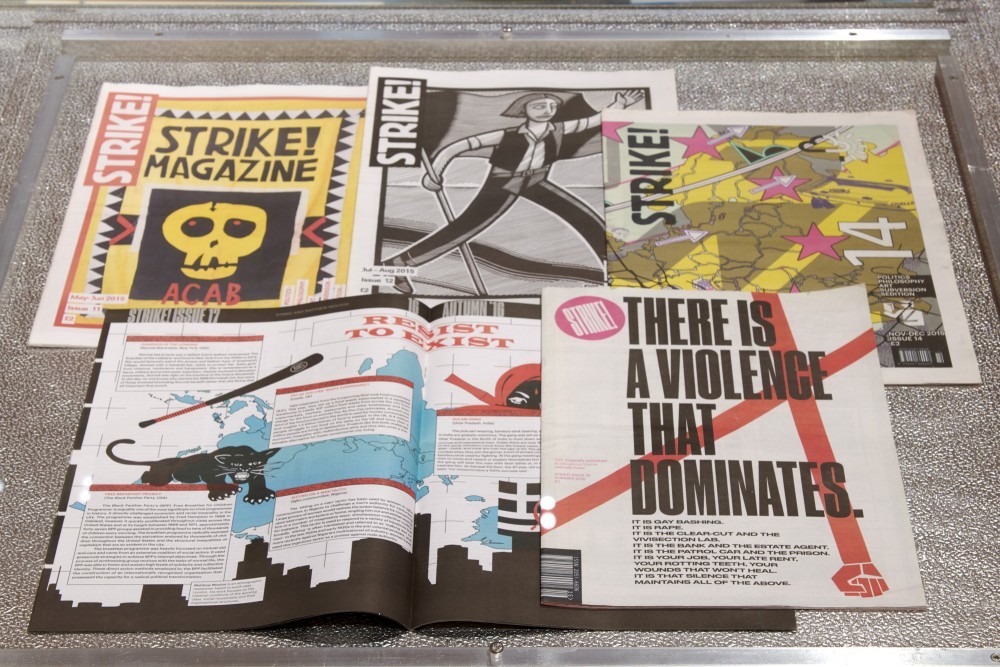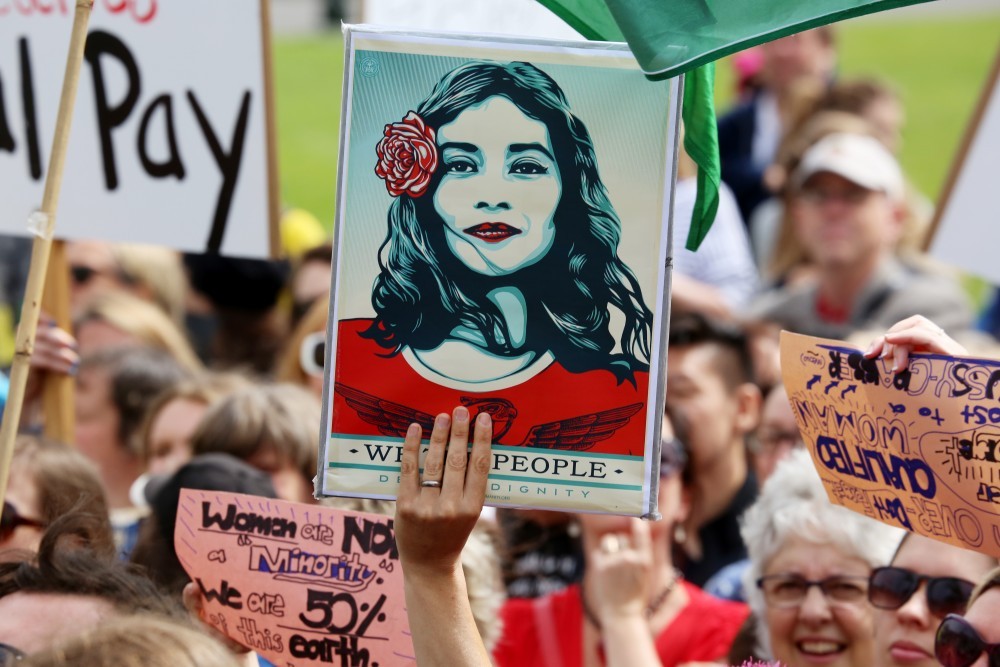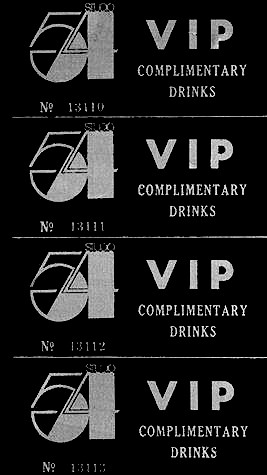POSTER POLITICS: An Exhibition About Graphic Design and Political Activism
They say you shouldn’t discuss politics at the dinner table but at London’s Design Museum it feels as though it’s been downright swept under the rug. Buried in a basement corner of its cavernous home in the repurposed Commonwealth Institute, Hope to Nope, a new exhibition exploring graphics and politics over the last ten years is a little difficult to find. Even when Shephard Fairey’s ubiquitous “Hope” poster does appear at the bottom of the staircase, it’s visually interrupted by a bold box informing visitors: “The Design Museum does not necessarily endorse any of the views expressed in this exhibition, some of which may cause offence.” I’m sure many exhibitions include these kinds of disclaimers, but none of them have clamoured quite so loudly.
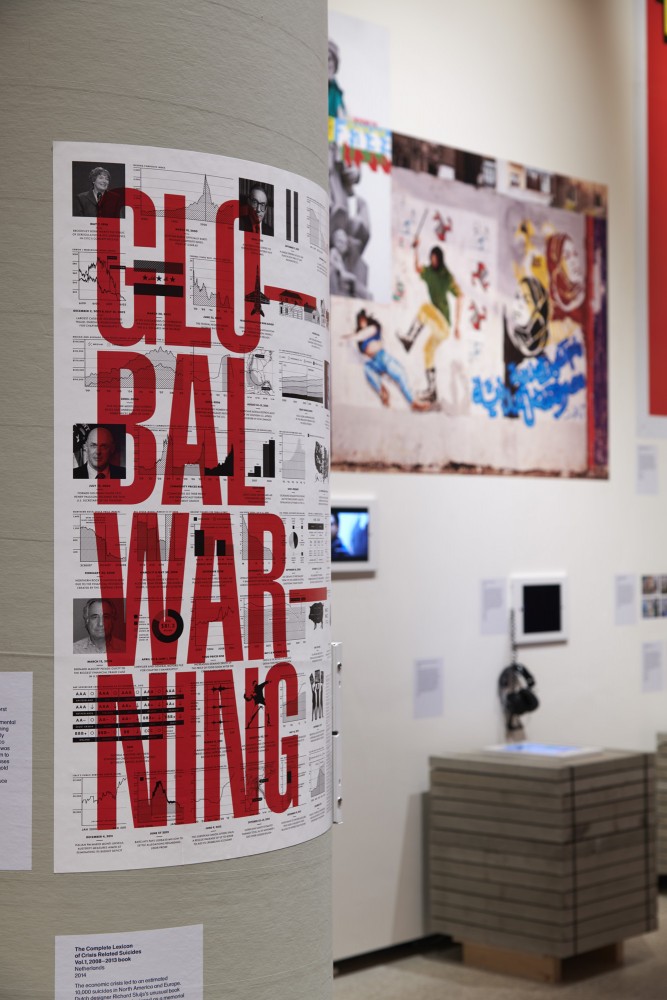
Courtesy London Design Museum © Benjamin Westoby.
Yet finally turning the corner into the exhibition it’s clear the basement has a lot to say. Hope to Nope was curated by Margaret Cubbage and GraphicDesign& who separated the space into three sections organized by furniture loosely resembling the apparatus of antisocial urbanism — blockades, bollards, pillars — and is packed from floor to ceiling with objects ranging from pussy protest posters to Pepe the Frog. Perhaps in an effort to reflect the complicated nature of discerning truth, or at least a coherent narrative, from the myriad streams of events we expose ourselves to on a daily basis, the exhibition is chaotic and cluttered. Organized vaguely into sections of “Power,” “Protest,” and “Personality,” there is little to discern the three or to run a narrative through the show — more a feed than a thread, let’s say.
That said, the objects included are virtually always interesting and the scope of the curators’ vision is impressive. Hillary Clinton campaign logos sit alongside the Brixton Pound, a south London micro-currency; political posters by the Syrian art collective Alshaab Alsori Aref Tarekh (The Syrian People Know Their Way) are side-by-side with Milton Glaser. Hope to Nope is also phenomenally up-to-date. One of the three billboards used to protest the lack of action following the Grenfell Tower fire (in reference to Martin McDonagh’s Oscar-winning film) is displayed — just over a month after it was paraded around London.

Courtesy London Design Museum © Benjamin Westoby.
The most striking moments of the show are often those of clash or contrast and the exhibition reinforces the ability of graphic design to discern the sound from the noise of contemporary life. For example, the positioning of an image of the IS flag with a UNHCR infographic depicting the impact of bomb strikes in Gaza. The aim, of course, is to allow visitors to consider the graphic impact of each of these disparate design moments. However, like seeing a Spongebob meme seamlessly scroll into the latest Trump-tastrophe, the effect can be politically flattening.
A flag designed by Dread Scott that reads “A Man Was Lynched By The Police Yesterday” flies prominent in the first room. Scott’s is an update of a similar flag that the NAACP hung from their headquarters in New York in the early 20th century and was created in response to the police killings of Walter Scott, Philando Castile, and Alton Sterling in 2015 and 2016. Its simplicity is powerfully chilling and its raised position a moment of calm amidst an otherwise very noisy exhibition.
Text by George Kafka.
Hope to Nope is on view through August 12, 2018.





